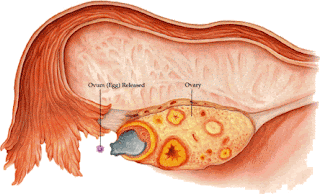|
This is the
simplest form of assisted conception treatment. It involves inserting the
husband's sperm into the wife’s uterus at the time of ovulation. The sperm
sample is first prepared to remove dead and weak sperm and the best sperm are
then strengthened even further to improve their ability to make a baby. On the
day of IUI, the husband has to produce his semen by masturbation. He is advised
to comply with the following instructions:
·
3 to 5 days of abstinence prior to semen
collection
·
inform the nurse if he was sick or on any
medication for the past 2 months
·
collection by masturbation is preferred
·
wash hands with soap and clean with water before
semen collection
·
do not use lubricant, soap or perfume during
semen collection
·
avoid spillage when semen is collected
|
After the semen
is produced, the laboratory technician or embryologist will process the semen
by removing the seminal plasma, debris, residual cells, dead and sluggish
sperm. This is done by a series of steps including adding sperm wash media and
centrifuging. The final solution with live and motile sperm will be used for
insemination.
The wife too is
usually given hormonal medications (tablets and occasionally hormonal
injections) so that she will produce more eggs from her ovaries. When the
ovarian follicles reach 18mm in diameter, a human chorionic gonadotropin (hCG)
injection is given to mature the eggs and trigger ovulation. The hCG injection
is usually given 36 hours before IUI is performed.
The process of
IUI requires no sedation or anaesthesia and it is similar to that of pap smear.
A speculum is inserted into vagina to hold it open. Then the washed sperm is
inserted into the wife's uterus using a long and thin catheter through the
cervical canal. The whole procedure takes just 5 minutes to complete.
After IUI, the
wife may require some luteal support to strengthen the uterus such as vaginal
pessary or injection. She has to take extra care such as:
| ·
rest more and avoid excessive physical
activities. Bed rest is not necessary.
· drink plenty of water · do not take any medication without doctor consultation |
Urine or blood pregnancy
test will be done two weeks after the procedure to confirm pregnancy.
This combination
of good sperm, extra eggs and timing during ovulation is the key to success.
IUI is useful for couples with unexplained infertility and where the husband’s
sperm quality or quantity is slightly below normal. It cannot be used where the
fallopian tubes are damaged or where the sperm is very poor.








